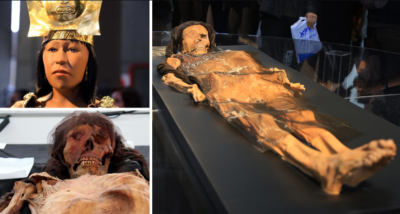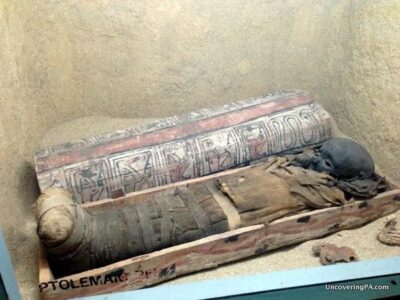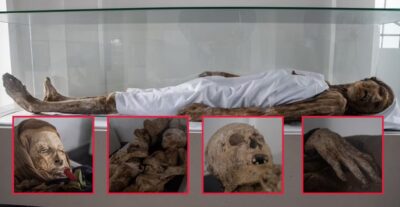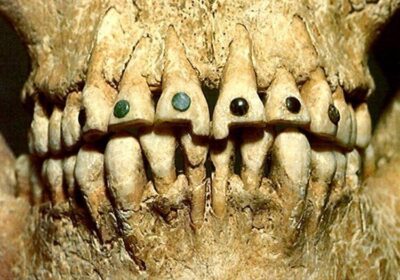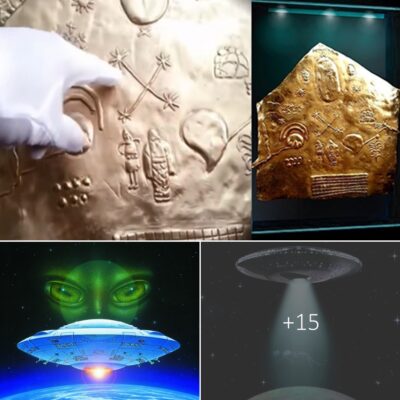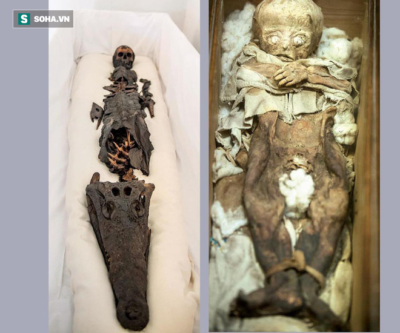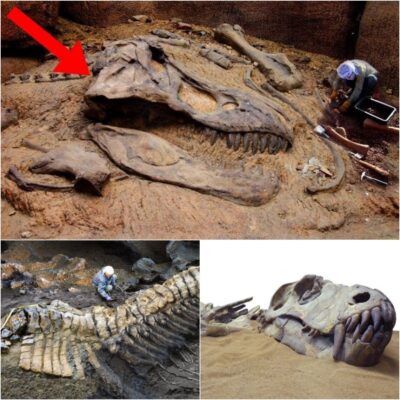
Burial sites in Yakutia, Siberia in the Russian Republic. (Source: Theves et al, 2011)
The Yakut community of Eastern Siberia has gained some attention from anthropologists because it culturally stands out from other Siberian populations. Their Turkic language, unique burial practices, and horse-breeding culture is not native to Siberia. Recent genetic analysis of 58 bodies preserved in permafrost from the last five centuries and 166 current members of the community, along with historical records, has produced a well characterized Central Asian population. Crubézy et al (2010) report that this community originated from a small group of horse riders from the Lake Baikal region who settled as the northern most incursion into Siberia of the Steppe horse cultures. By the 15th century these male riders had intermarried with local Siberian women creating a genetic profile and community that has remained consistent from the 15th century to today (Crubézy et al, 2010).

Figure S1: Male grave from Boulgouniak 1 (Source: Theves et al, 2011)
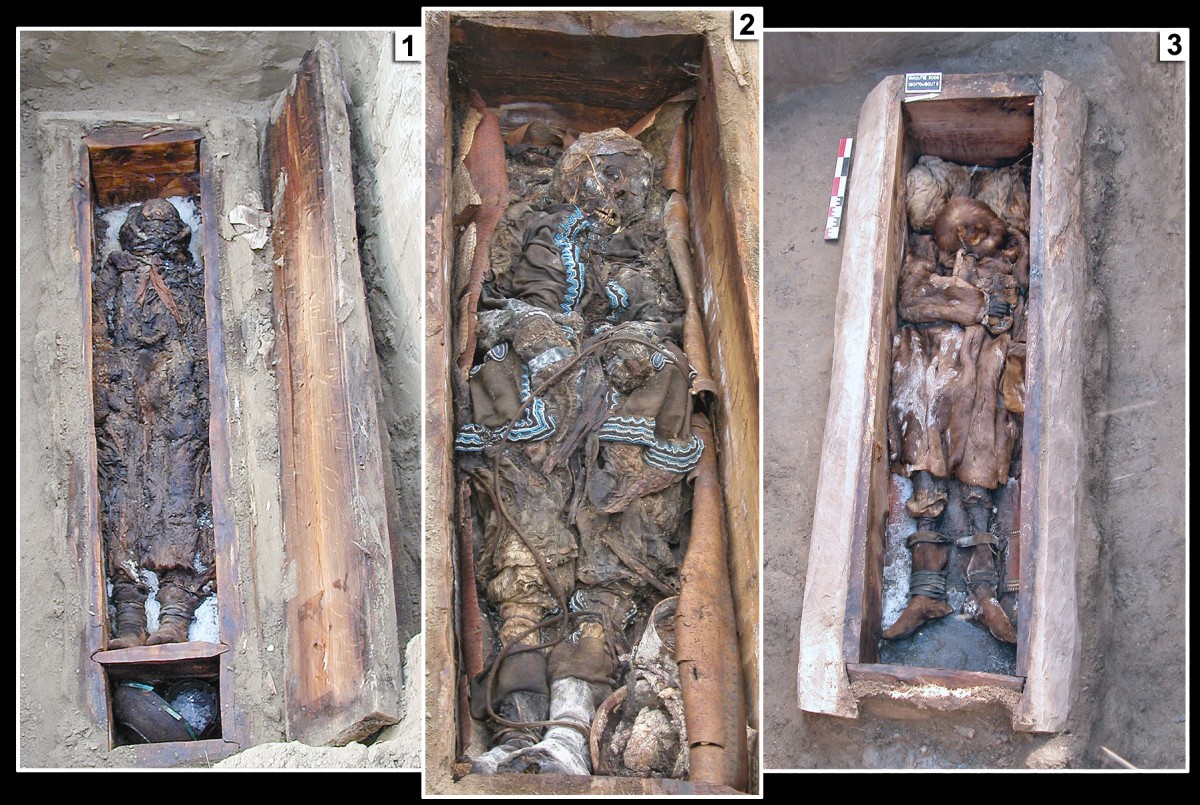
Recent success at extracting DNA from bodies in the Siberian permafrost inspired an ambitious project to survey all of the microbes found in tissue samples from a small set of Yukat remains. Contact with European Russian settlers exposed the Yukat to new pathogens. They were decimated by smallpox and measles carried by Russians in the 17th to 19th century. Thèves et al (2011) extracted DNA out of permafrost graves dating from the late 17th to 19th century to survey their microbiome.
Thèves et al (2011) collected samples from five sets of remains, two single graves of a mummified man (Boul. A, Fig. S1) and mummified woman (Boul B., Fig. S2) and a triple grave (OY A, B, C, Fig. S3) of skeletons. Teeth were collected from all five and mummified lung tissue samples were taken from Boul A and Boul B. They extracted DNA from all specimens for human DNA analysis and microbial DNA screening.
They used a two-step process to identify pathogens in these five people. Bacterial species were initially identified by amplification of 16S rRNA sequences that have been characterized for each genus. This process identified many of the environmental microbes in the remains. Potential pathogens were further confirmed by amplification of rpoB gene sequences that are more species specific. Each amplification product was cloned and sequenced. A 95% sequence match with sequences in the microbial databases was required for a match to be considered valid. They also amplified human DNA sequences (mtDNA, autosomal short tandem repeats (STRs) and Y chromosome STRs) to evaluate DNA quality, check for PCR inhibitors and confirm that these remains are consistent with the Yakut lineages.

Fig. S2: Boulgouniak. 2 grave of a Siberian woman enclosed in ice. (Source: Theves et al, 2011)
These graves are not exactly what I imagine when I think of remains in permafrost. As you can see from the photo to the left and even more so in the photos below, various levels of decomposition have occurred.When I think of permafrost graves, I think of a Mastodon coming out of the ice nearly completely intact. As we will see, not only do these pictures suggest significant thawing, but perhaps that the remains were waterlogged for much of their thawed time. I am a little puzzled why they chose these particular remains for this study, but we don’t always get the research material that we would like. I really have to wonder if the skeletonized remains below are any better preserved than complete skeletons found outside of permafrost. Ice lined graves do not guarantee good DNA recovery. OYC samples did not produce any human nuclear DNA and only environmental bacteria, mostly Clostridium species. Thèves et al (2011) suggest that all DNA in the OYC tooth was destroyed by bacterial invasion through a cavity in the tooth. It is unusual to use a tooth with cavities or traumatic damage for aDNA extraction. Thèves et al (2011) simply state that this skeleton had cavities in the teeth. This is a good example of why teeth with cavities are unsuitable for aDNA extraction. From the five remains they got 67 usable clones that passed all of their quality control measures.

Figure S3: Multiple grave from Oyogosse site. (OY A, B, C) (Source: Theves et al, 2011)
The identity of the clones was established by comparing their sequences to the NCBI reference genomic database. The majority of clones were from environmental bacteria. This is particularly unsurprising considering they appear to have ground the whole tooth to powder for DNA extraction, rather than using only the protected dental pulp. They identified many species common to Arctic and the Antarctic including Xanthomonas sp., Pseudomonas sp., Azotobacter sp. and Clostridium sp. An unexpected find in OYB was a single clone of Myobacterium marinum, a species usually found in fresh and salt water globally. Thèves et al (2011) suggest that M. marinum may be present in the permafrost environment. Considering that these remains thawed enough to decay down to skeletons, perhaps this indicates this grave was waterlogged.
Evidence of three pathogens were found. Shigella dysenteriae 16S rRNA was found in two out of three members of the Oyogosse site (OYA & OYB). Considering the OYC tooth only produced environmental microbial DNA, this could indicate that this multiple grave came from an outbreak of dysentery. Streptococcus pneumoniae was found in OYB, although the match was only 92% and therefore below their threshold for confirmation. Further investigation with rpoB primers failed to amplify either S. dystenteriae or S. pneumoniae in either specimen and no further investigation was done on either pathogen. Bordetella pertussis (Whooping Cough) was identified in Biol 1 (Fig S1 above) by 16S rRNA and the rpoB gene sequences. Thèves et al (2011) note that this is the first evidence of B. pertussis among the Yukat. No pathogens were identified in the female single grave (Fig S2, biol 2), although only its lung tissue was screened for pathogens.
Amplifying the universal microbial genes is probably the only way to find these common pathogens in an archaeological setting. There is no doubt that the process is more complicated that suicide PCR which looks for individual pathogens. I do wonder about the efficiency of detection when grinding the entire tooth to a powder. This type of work is also prone to contamination with environmental bacteria. It is also possible that the environmental microbes identified in remains could help reconstruct the environmental history of the grave, especially important for much older graves.

